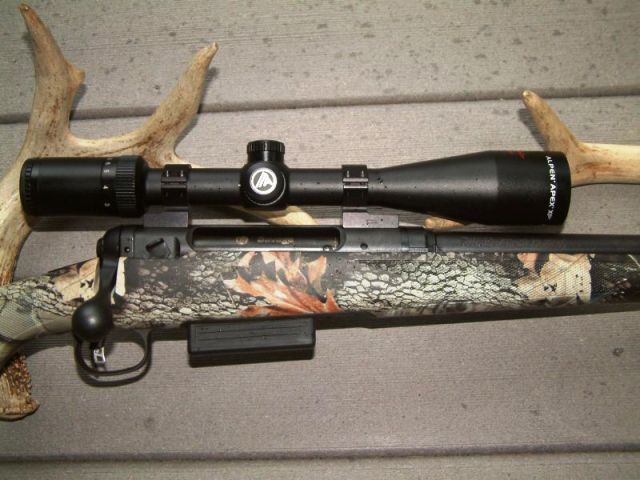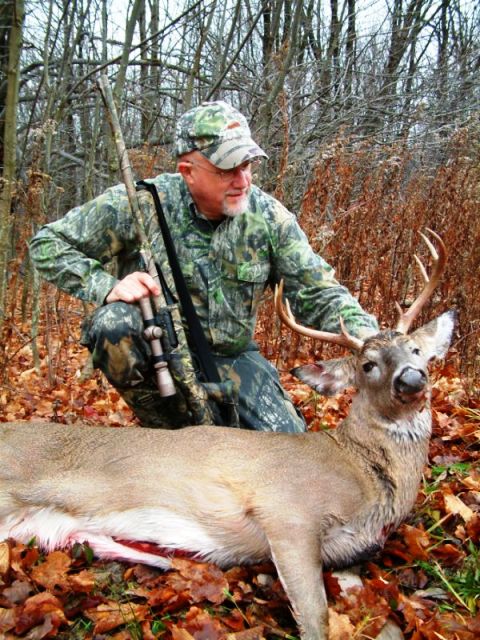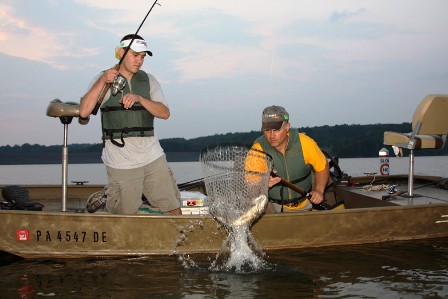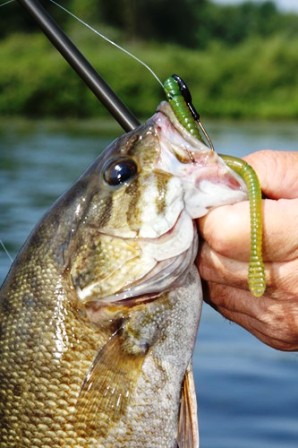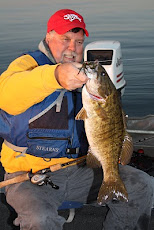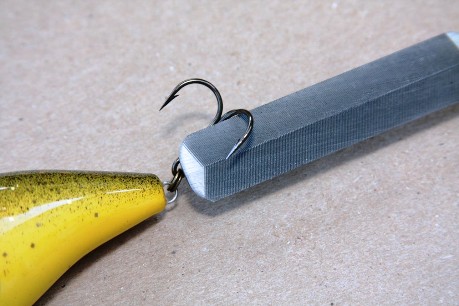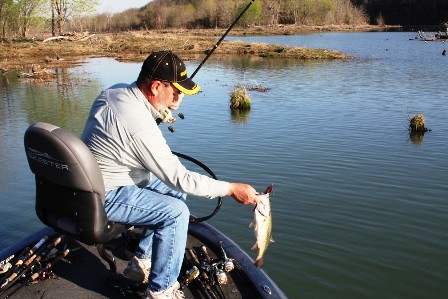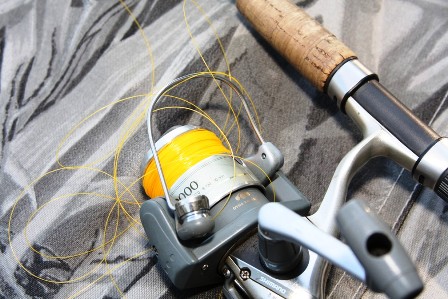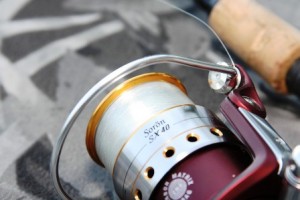Shotgunning for Deer – Fully Rifled Barrels
By Steve Sorensen
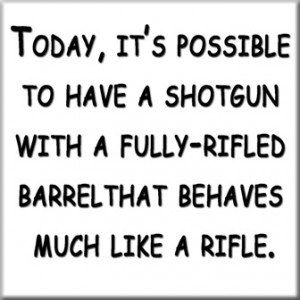 You can spray buckshot at a close-range running deer, or you can throw punkin balls at them. Or, you can upgrade to a shotgun with a rifled choke tube. All of these have accounted for many deer through the years.
You can spray buckshot at a close-range running deer, or you can throw punkin balls at them. Or, you can upgrade to a shotgun with a rifled choke tube. All of these have accounted for many deer through the years.
But today, it’s possible to have a shotgun with a fully-rifled barrel that behaves much like a rifle.
Fully Rifled Barrels
In an effort to improve shotgun capabilities for shotgun-only areas, many manufacturers now offer shotguns with fully rifled barrels. Your granddad never dreamed of a rifled barrel on his old shootin’ iron.
Barrels engraved with rifling impart rifle-like accuracy, carry a truckload of energy with today’s modern slugs, and deliver deep, bone-busting penetration. While prevailing wisdom still holds that shotguns are short-range weapons, but some of them can reach out and touch the boiler room of a whitetail at distances unheard of for shotguns.
None of this should be surprising when you look at the new Savage Model 220F and the re-introduced Browning A-Bolt. Both are based on the respective company’s rifles. The 220F is built on the proven and popular Savage Model 110 rifle action, and the A-Bolt configuration is a staple in Browning’s rifle line. You can’t go wrong with either one.
A buddy of mine has the Browning A-Bolt, and I have the Savage with a camouflage synthetic stock. Savage understands that a lot depends on the trigger, so they install the Savage AccuTrigger on this gun, which is set to break at about 3 pounds. If there’s any creep associated with that trigger, it’s the one who owns the finger that squeezes it.
I also like the Savage because it’s lighter than most slug guns, and the bolt action with a detachable magazine handles and feels like a rifle. Target acquisition is rifle-like – when I shoulder it the scope is perfectly centered in front of my eye. Scopes, incidentally, are something shotguns of yesteryear virtually never wore, but today’s shotguns use them to wring out all the accuracy that’s built into these guns.
Testing Ammunition
And, speaking of accuracy, I tested six different loads. All fire saboted slugs – bullets encased in a plastic shield that is shed once the bullet leaves the barrel. The first groups I shot were marginally satisfactory, but I loosened and then tightened the stock bedding screws a bit, and the groups shrunk.
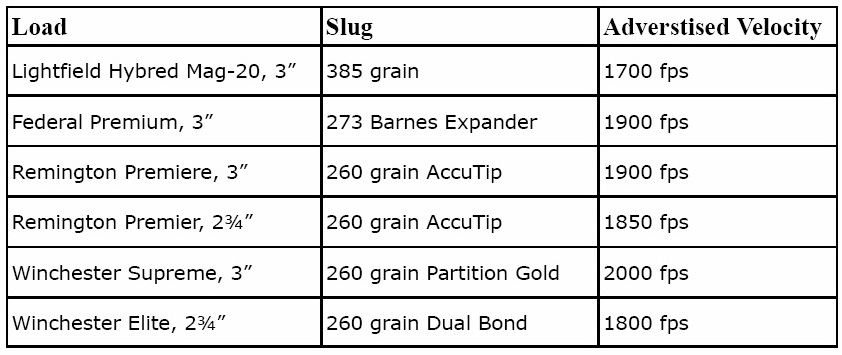
The Remington 2¾” gave me the best three-shot group – an astonishing .61″ center-to-center at 100 yards. It’s only 50 feet per second slower than the 3″ Remington, which consistently grouped at 1½” to 2″. This AccuTip bullet has a great reputation for accuracy from the Savage 220F, and for deadly terminal performance. All others grouped plenty tight enough to make me comfortable with any of them.
Virtually every review I’ve read of the Savage 220F showed similar accuracy results, all more than adequate for deer hunting, and the best loads make this a 200-yard gun.
I toted the Savage a few times last fall in New York, and always felt like I was carrying a rifle. Unfortunately, the days I carried it were the same days deer made themselves scarce.
I look forward to taking it out again this year, and it might accompany me to Todd Frank’s Clear Creek Outfitters in Lancaster, Ohio. Todd and his family run a great operation, and will do their best to put you on a great buck.
If you’re looking to hunt a shotgun state, or want one gun that will perform equally well in shotgun or rifle states, you need to consider a shotgun with a rifled barrel. It’s a far better deerslayer than granddad’s old smoothbore, and it will bring home the venison without needing the luck he sometimes depended on when he launched punkin balls.
***
About Steve Sorensen
 Award-winning outdoor writer and speaker Steve Sorensen loves the Havalon knife, and has been a fan of knives since he begged his dad for a hunting knife when he was six years old. His articles have been published in Deer & Deer Hunting, Sports Afield, and many other top magazines across the USA. Invite Steve to speak at your next sportsman’s event, and follow his writing on his website, www.EverydayHunter.com.
Award-winning outdoor writer and speaker Steve Sorensen loves the Havalon knife, and has been a fan of knives since he begged his dad for a hunting knife when he was six years old. His articles have been published in Deer & Deer Hunting, Sports Afield, and many other top magazines across the USA. Invite Steve to speak at your next sportsman’s event, and follow his writing on his website, www.EverydayHunter.com.
For more atricles by Steve Sorensen, click here.
And for the best deer skinning knife, click here.
9,474 total views, no views today


